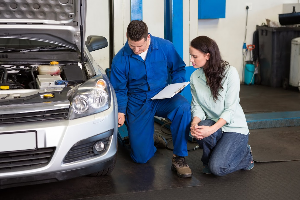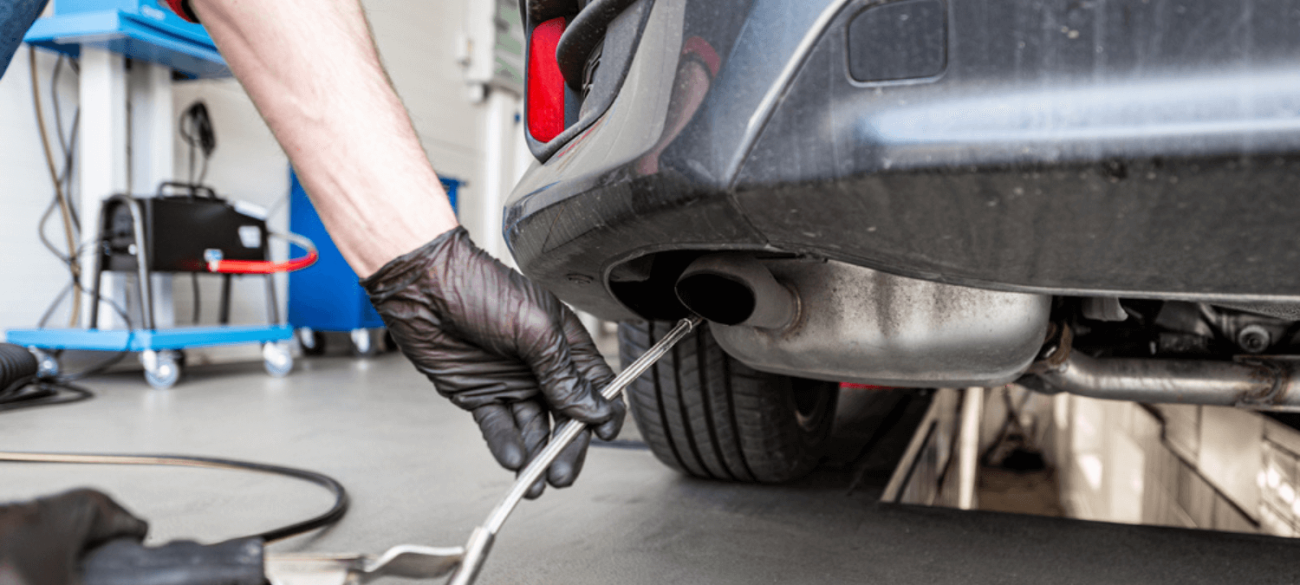 You may have heard the term "safety and emission check," but you're not sure exactly what it entails. Safety inspections are a way to ensure that all the vehicles on the road are safe and not likely to cause harm. Similarly, emission inspections make sure vehicles aren't emitting chemicals that harm the air.
You may have heard the term "safety and emission check," but you're not sure exactly what it entails. Safety inspections are a way to ensure that all the vehicles on the road are safe and not likely to cause harm. Similarly, emission inspections make sure vehicles aren't emitting chemicals that harm the air.
Many U.S. states require safety and/or emission inspections every year or every other year. A mechanic shop must be certified to perform state inspections. Here's how they work.
Safety Inspections
When you bring your car in for a safety inspection, mechanics check many different parts of your car to make sure they're working properly. They might check:
- Brakes
- Tires and wheels
- Bulbs, lamps, and reflectors
- Windshield wipers
- Mirrors
- Seat belts
- The exhaust system
- The steering wheel and horn
- Window tinting and coating
- Gas caps
If the mechanic notices any major problems with a part, he or she will ask you to get that part repaired or replaced. This is important for protecting both you and other drivers. For example, if your brake pads are worn down, it might take you longer to brake. This could cause you to get in an accident, which would harm both you and other drivers. Thus, you'll need to replace your brake pads as soon as possible.
Once you pass the safety inspection, the mechanic will give you a sticker to place on your car's window. This shows law enforcement officers that your car is safe to drive.
Emission Inspections
Certain states require regular emission inspections to protect the air and the environment. If your state requires you to get an emission inspection, you must visit a mechanic certified to perform emission inspections. Mechanics test your car's exhaust system for unhealthy levels of carbon monoxide, oxygen, carbon dioxide, hydrocarbons, and nitrogen oxides.
If your car fails the emission inspection, your car might have a problem that requires repair. This could include:
- A malfunctioning ignition system
- A faulty oxygen sensor
- An injector leak
- A vacuum leak
- A malfunctioning air injection system
- A defective valve or gas cap
- Problems with the emission control system
- Worn spark plugs and wires
- A faulty carburetor or fuel injection unit
You'll need to have a mechanic fix these problems to lower your car's harmful emissions.
Why Are Emission Inspections Important?
You might not realize how impactful emissions inspections are to the community you live in and your overall vehicle performance. Getting an emissions inspection on your vehicle is not only good for the environment but for you as a driver and your vehicle.
Minnesota emissions testing allows an experienced mechanic to determine whether your vehicle has any safety hazards in the form of leaking fluids, excess smoke emissions, electrical problems, or other defects that could pose a hazard.
The implementation of emissions inspections were the result of the 1977 federal Clean Air Act, with the Act putting the power of required inspections in the hands of states. Minnesota is one of a handful of states that require emissions inspections in some capacity.
And although the state no longer requires vehicles to undergo inspections, doing so is a great way to do your part in keeping the environment clean. Plus, annual or biannual inspections are the best ways to keep your vehicle running as smoothly as possible.
Benefits of getting a Minnesota Car Inspection
Much like Minnesota's guidelines on emissions inspections, the state does not require vehicle safety inspections. However, it remains in the best interest of drivers to have their vehicles evaluated for a safety inspection at least on a bi-annual basis.
Safety inspections ensure that you're operating a vehicle that is safe for both you and other motorists on the road. Your mechanic will perform a thorough and detailed inspection of your vehicle to ensure that all its components are up to industry standards.
Additionally, undergoing a safety inspection can alert you to issues with your vehicle that you didn't know existed. Being aware of critical components that need to be replaced including brake pads, defective seat belts, non-operational lights, and even recalls can be critical in keeping you safe on the road.
Do I Need a Safety and Emissions Inspection in Minnesota?
Minnesota does not currently require regular safety checks for personal vehicles. You do need to get regular safety checks if you have a commercial vehicle. This is classified as a vehicle that carries 16 or more people, transports hazardous materials, or weighs over 26,000 pounds.
If you don't need a regular safety inspection to register your vehicle, you should still make sure your car is performing at its best. If you haven't had your car checked in a few years, bring it in to a mechanic for a thorough inspection.
Minnesota required emissions inspections from 1991 to 1999 because the Twin Cities did not meet federal air quality standards. But in 1999, Minnesota's air status was reclassified. Emission testing is not currently required in Minnesota.
Even though you don't need to get regular emissions inspections, you can still do your part to cut down on emissions. For example, you could ride public transportation or carpool instead of driving every day. You should also have a mechanic check that your car's engine, electrical systems, and fuel and air filters are performing properly.
Many drivers might confuse the notion of a vehicle inspection and a safety inspection. Both terms are essentially the same and refer to the thorough inspection of your vehicle to make sure it is safe for operation as detailed by industry standards.
As previously mentioned, Minnesota does not require vehicle inspections, however, it is strongly recommended that drivers participate in annual or by annual inspections. If you purchase a used vehicle form a private party an initial safety inspection can help ensure that the vehicle is operating as it should.
Most dealerships that sell used cars, trucks, and SUVs will have already conducted a safety inspection on their vehicle.
Where to get a Vehicle inspection in Minnesota
Whether you have a commercial vehicle that requires a safety inspection or you simply want to get your personal vehicle inspected, you'll have several options to turn to throughout the state of Minnesota.
For operators of commercial vehicles, your place of employment will typically take charge of getting the commercial vehicle inspected as required by Minnesota vehicle inspection regulations. Licensed commercial vehicle dealers can also conduct safety vehicle inspections.
Commercial drivers can also turn to any trained or certified employees of the Minnesota Department of Transportation or the Minnesota Department of Public Safety.
Everyday drivers wanting a Minnesota car inspection for their own peace of mind can bring their vehicle into a trained and certified inspector, dealership, or repair facility. A trained professional can perform both a safety and emissions inspection for everyday drivers wanting one.
New cars have better safety and air quality than older cars. Replacing your aging car with a new one can help protect you, other drivers, and the air. If you're ready to turn in your old car, consider donating it to Newgate School.

